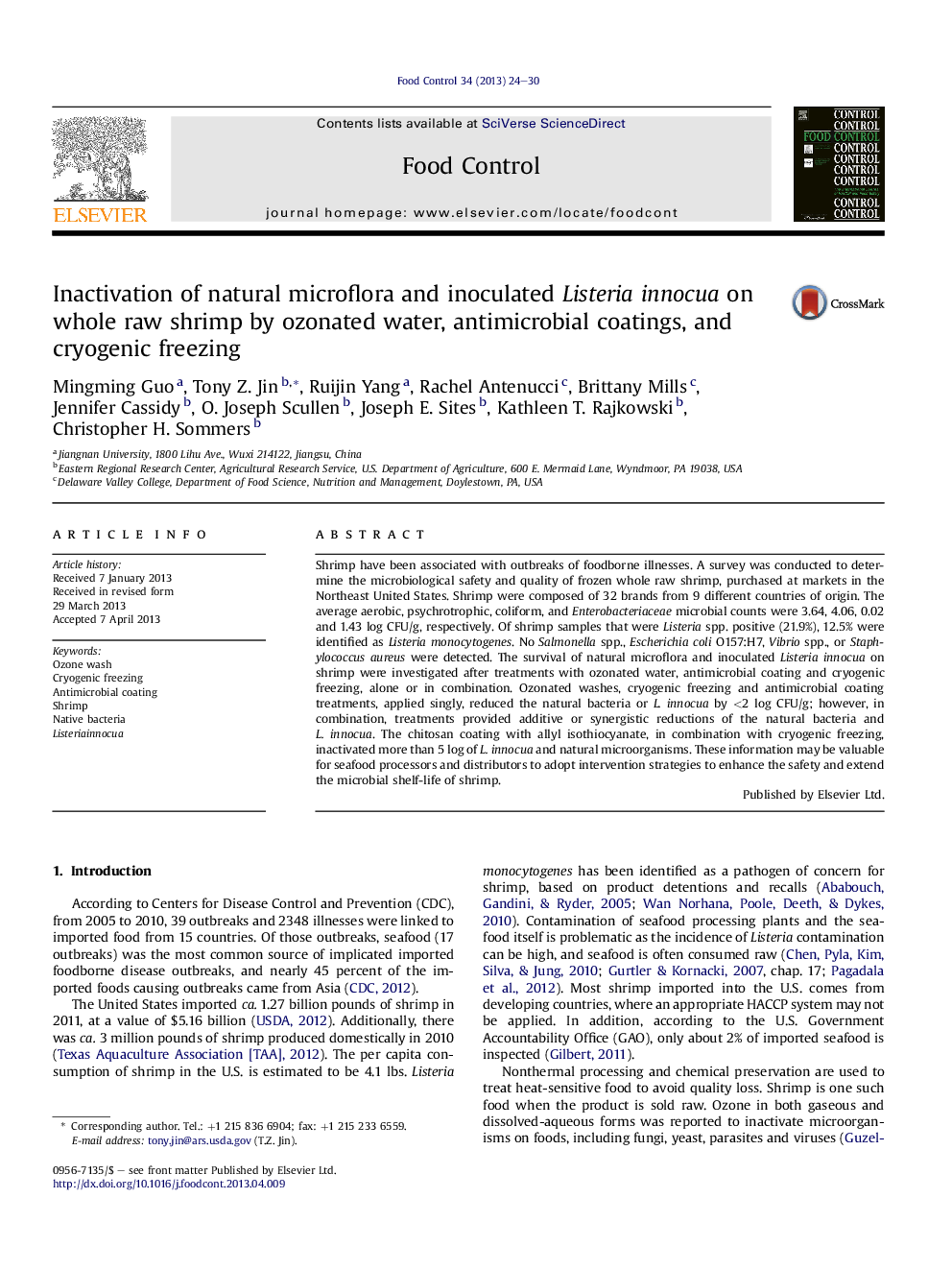| Article ID | Journal | Published Year | Pages | File Type |
|---|---|---|---|---|
| 6392692 | Food Control | 2013 | 7 Pages |
Abstract
Shrimp have been associated with outbreaks of foodborne illnesses. A survey was conducted to determine the microbiological safety and quality of frozen whole raw shrimp, purchased at markets in the Northeast United States. Shrimp were composed of 32 brands from 9 different countries of origin. The average aerobic, psychrotrophic, coliform, and Enterobacteriaceae microbial counts were 3.64, 4.06, 0.02 and 1.43 log CFU/g, respectively. Of shrimp samples that were Listeria spp. positive (21.9%), 12.5% were identified as Listeria monocytogenes. No Salmonella spp., Escherichia coli O157:H7, Vibrio spp., or Staphylococcus aureus were detected. The survival of natural microflora and inoculated Listeria innocua on shrimp were investigated after treatments with ozonated water, antimicrobial coating and cryogenic freezing, alone or in combination. Ozonated washes, cryogenic freezing and antimicrobial coating treatments, applied singly, reduced the natural bacteria or L. innocua by <2 log CFU/g; however, in combination, treatments provided additive or synergistic reductions of the natural bacteria and L. innocua. The chitosan coating with allyl isothiocyanate, in combination with cryogenic freezing, inactivated more than 5 log of L. innocua and natural microorganisms. These information may be valuable for seafood processors and distributors to adopt intervention strategies to enhance the safety and extend the microbial shelf-life of shrimp.
Related Topics
Life Sciences
Agricultural and Biological Sciences
Food Science
Authors
Mingming Guo, Tony Z. Jin, Ruijin Yang, Rachel Antenucci, Brittany Mills, Jennifer Cassidy, O. Joseph Scullen, Joseph E. Sites, Kathleen T. Rajkowski, Christopher H. Sommers,
